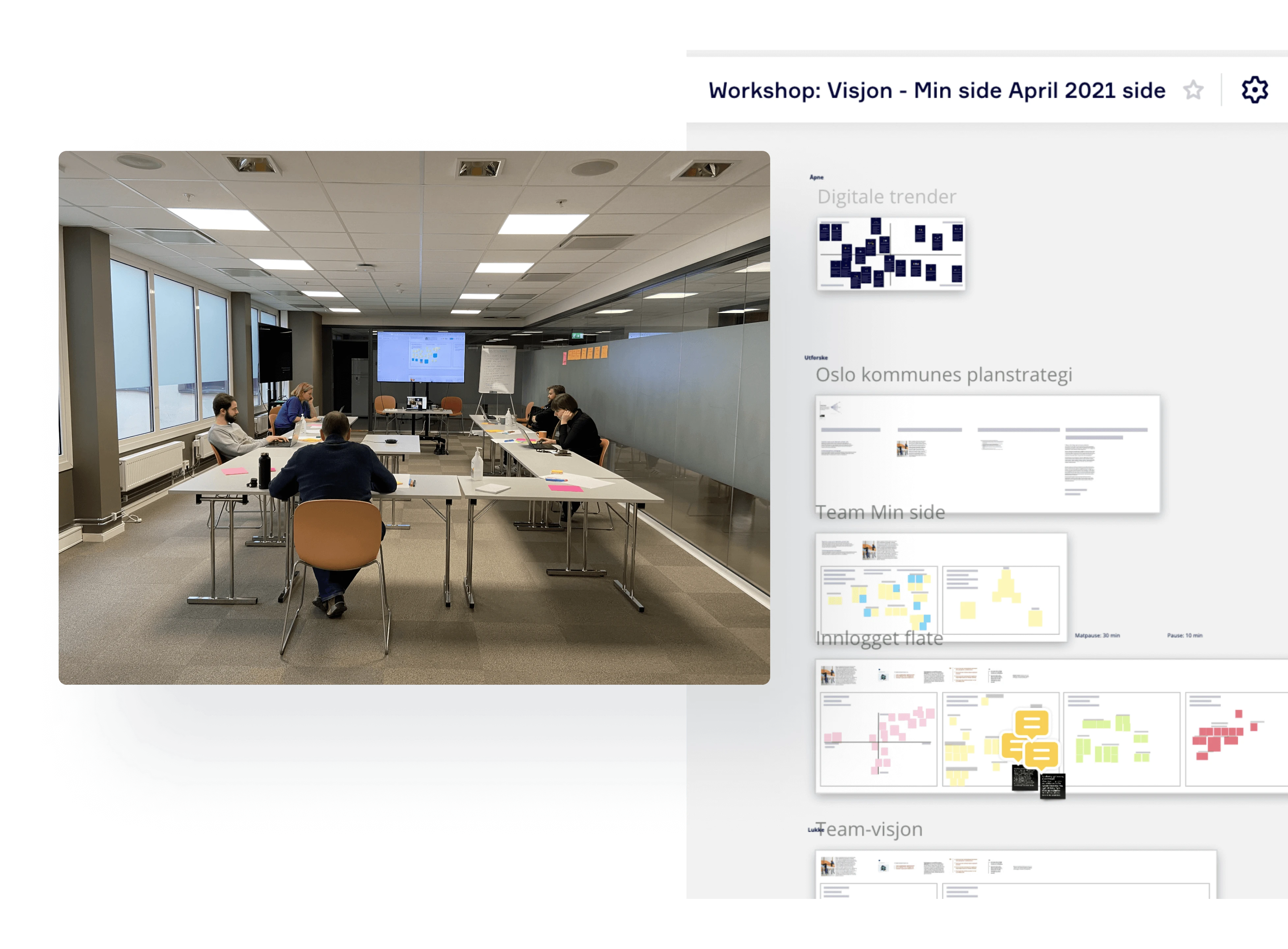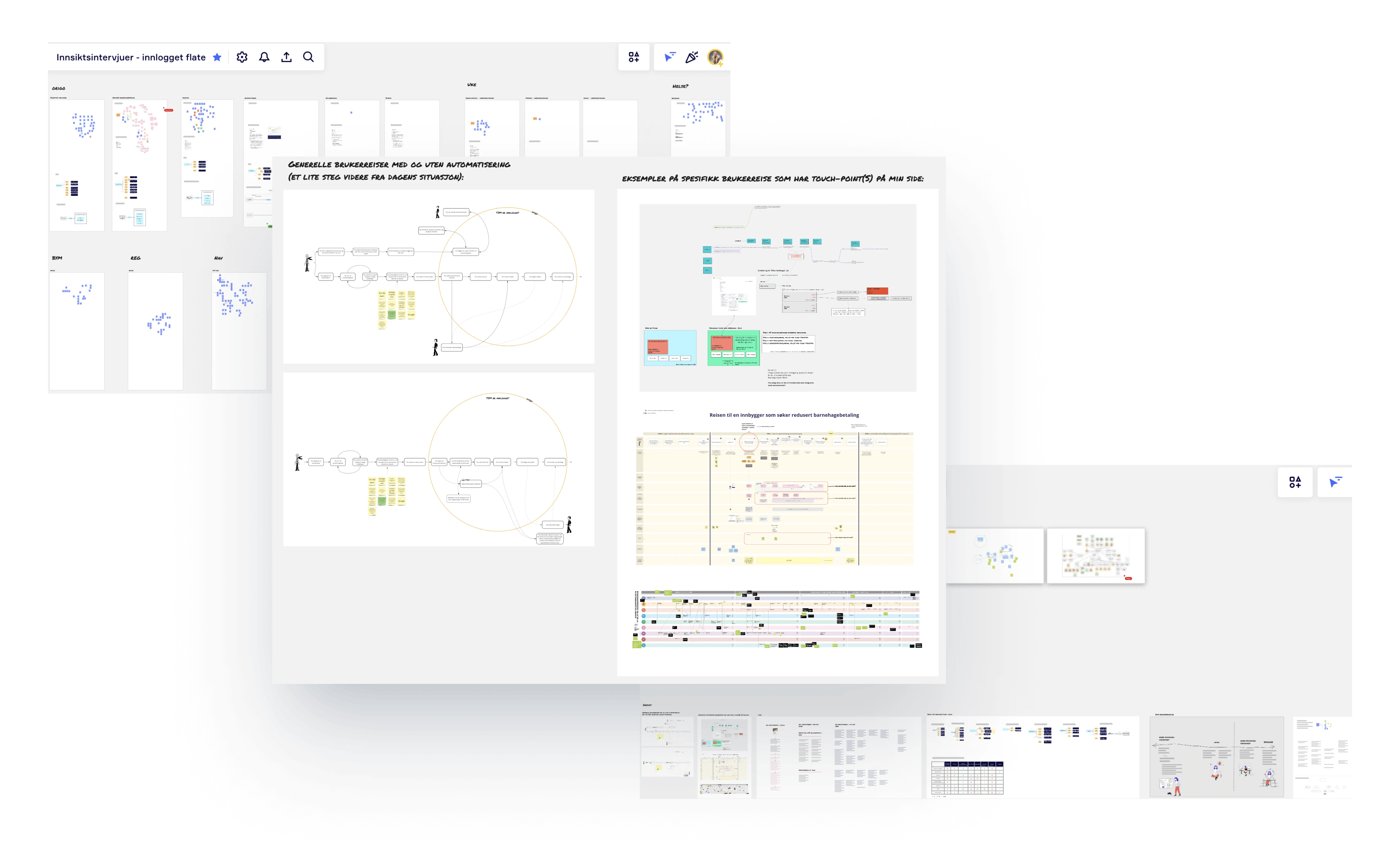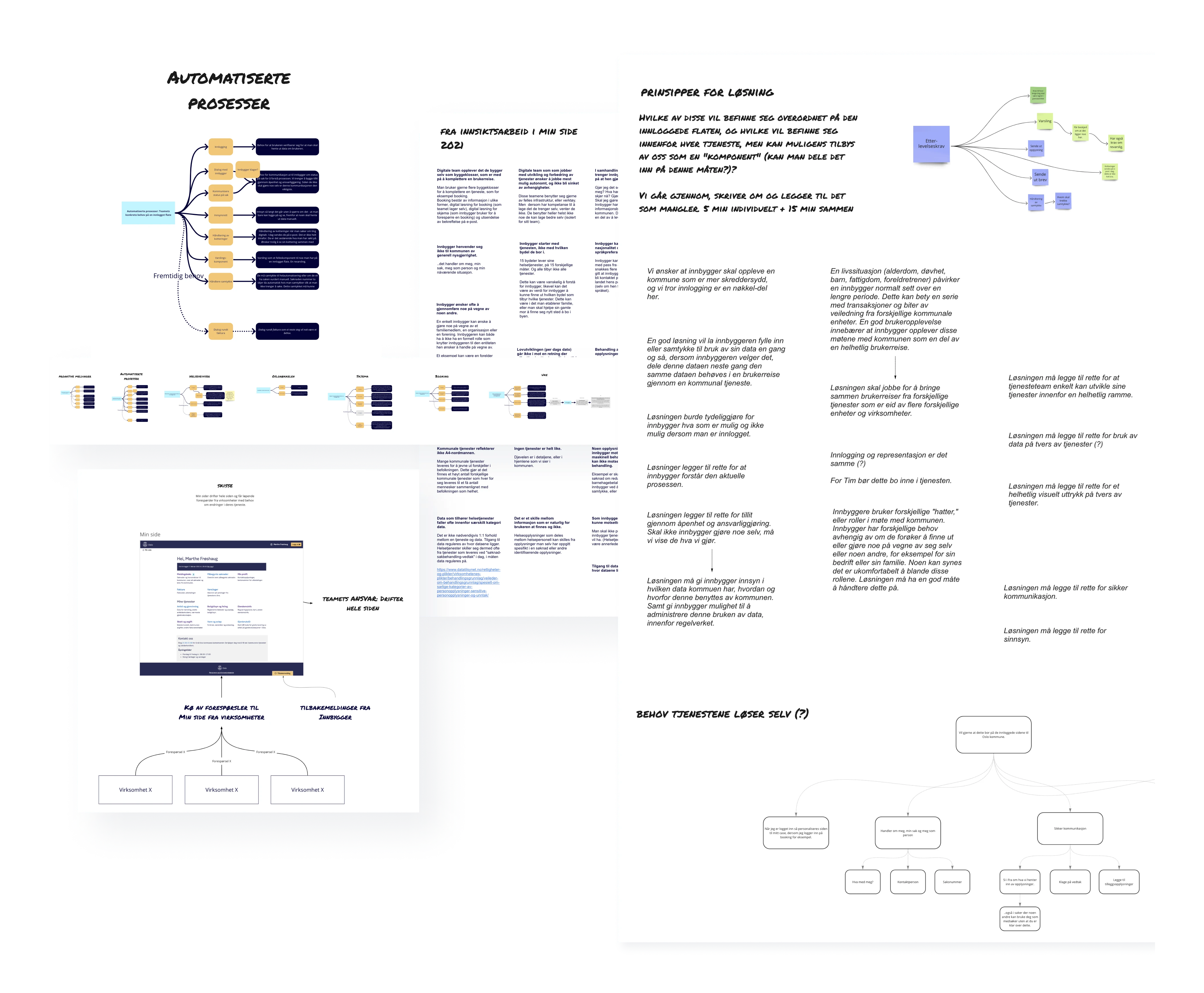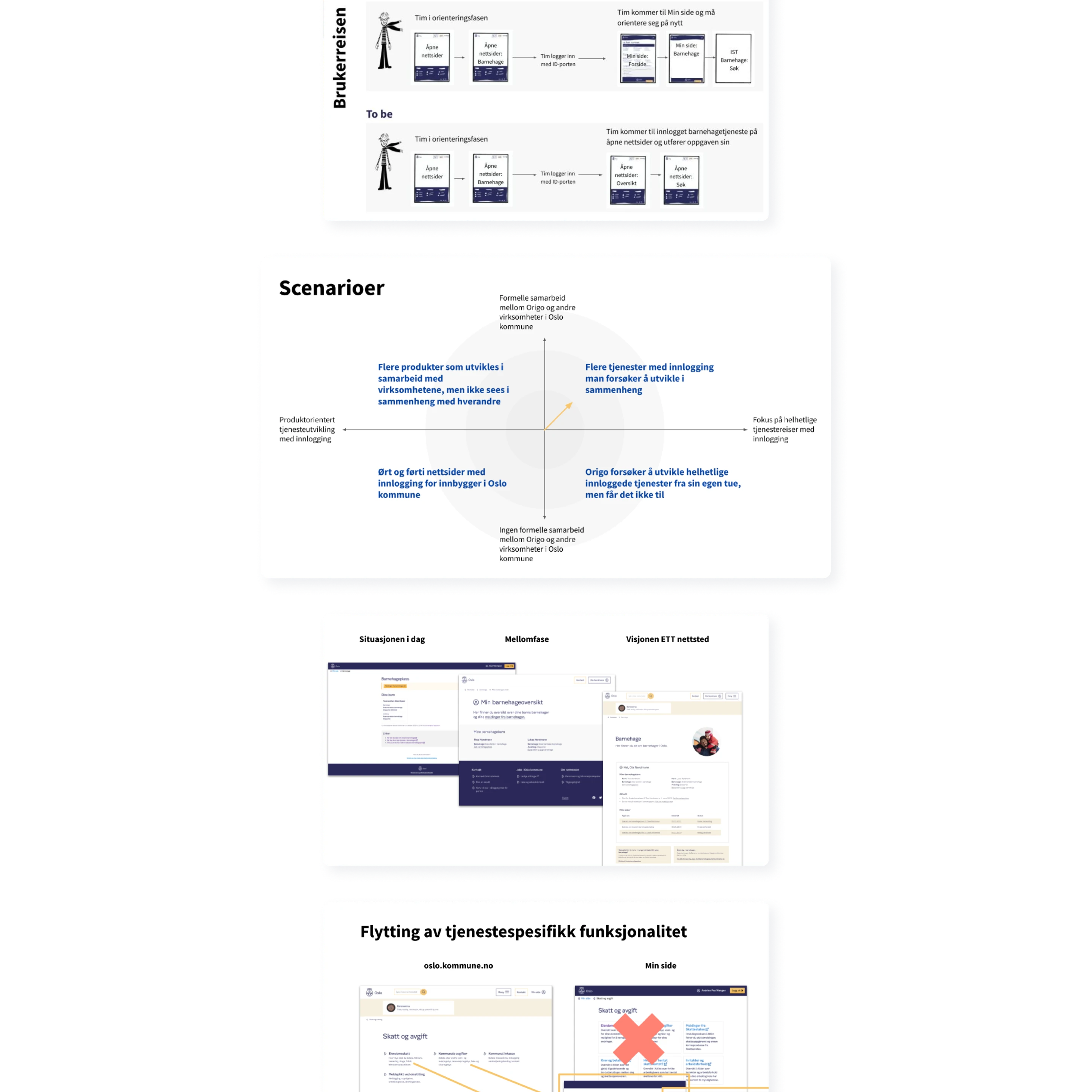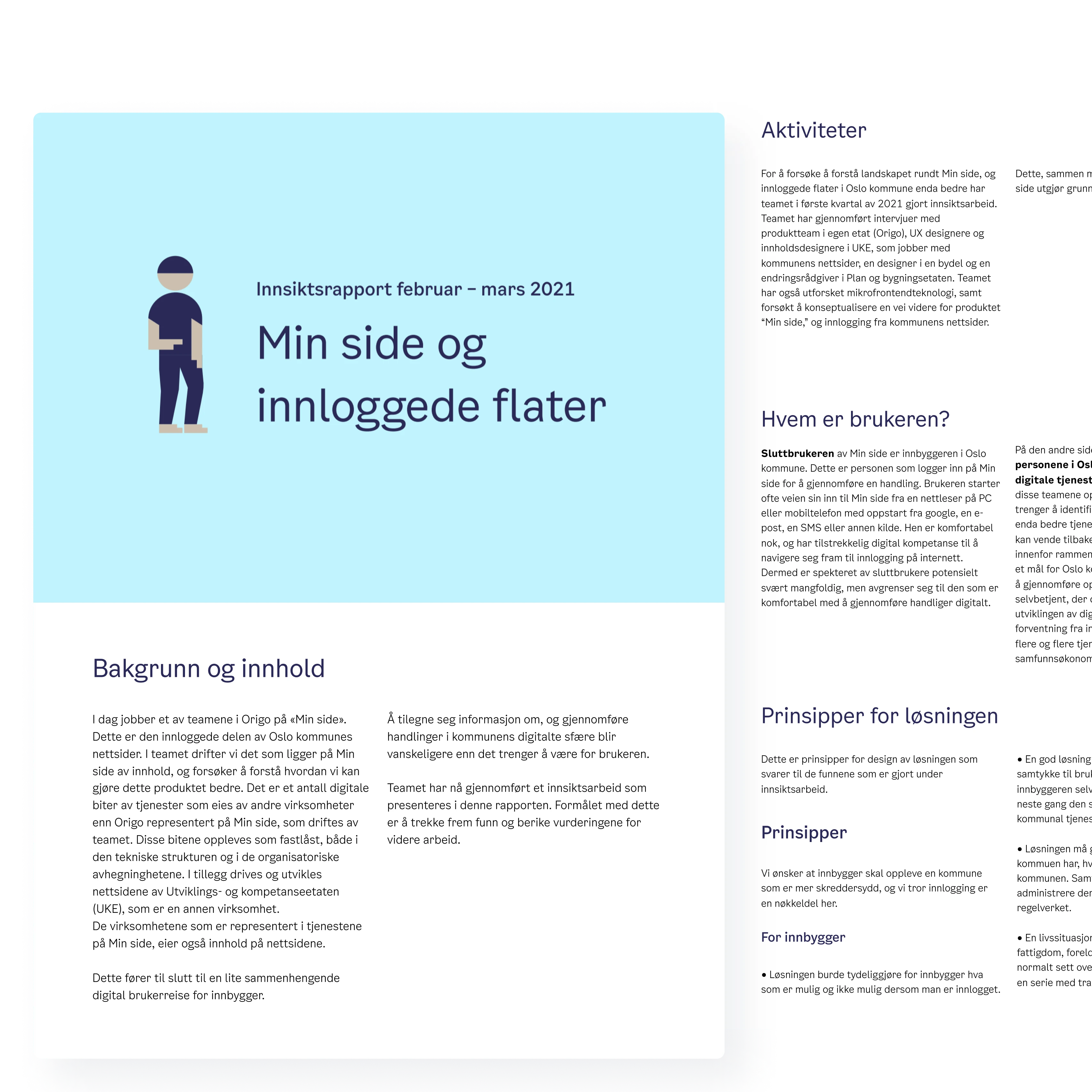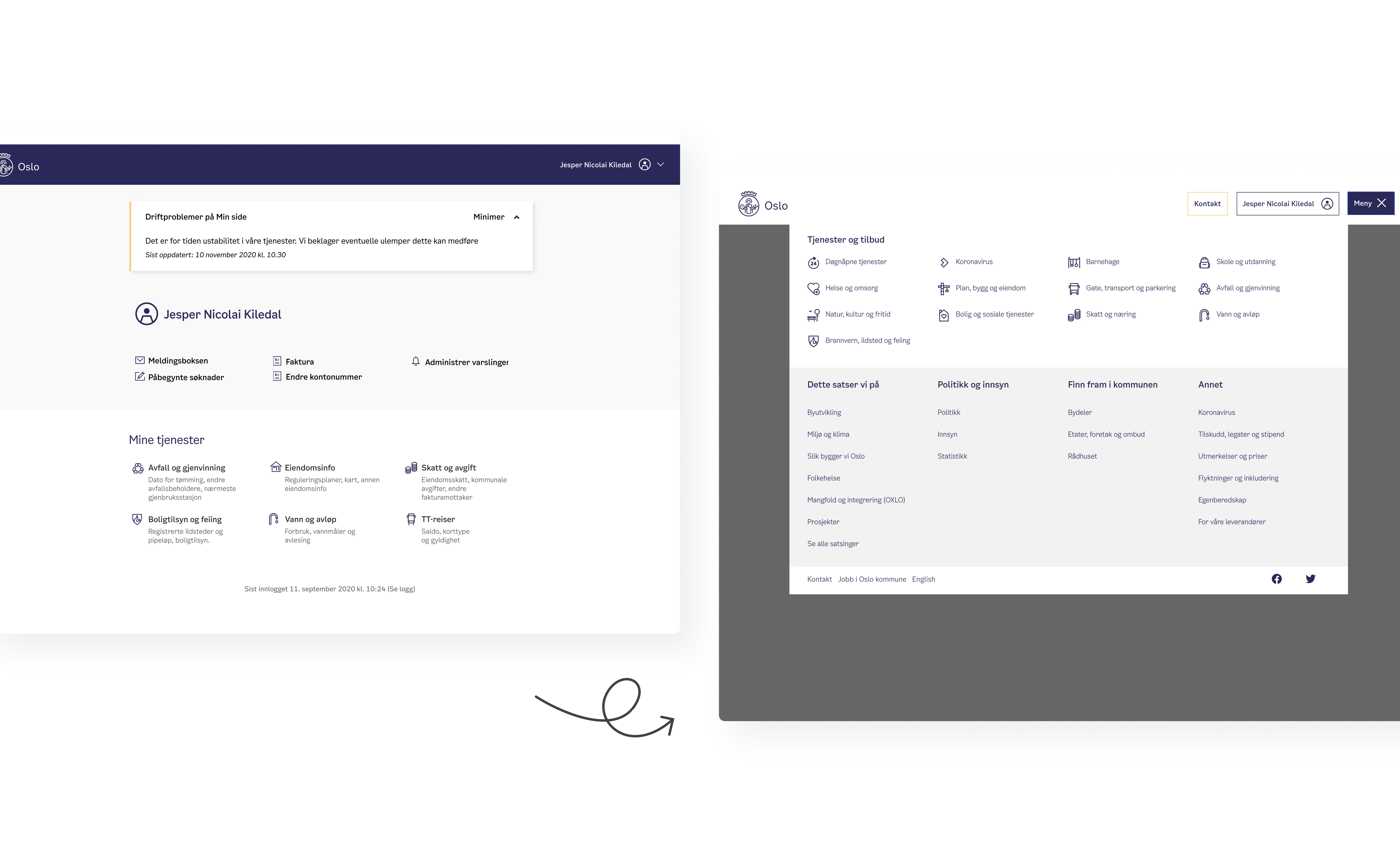Oslo My Site
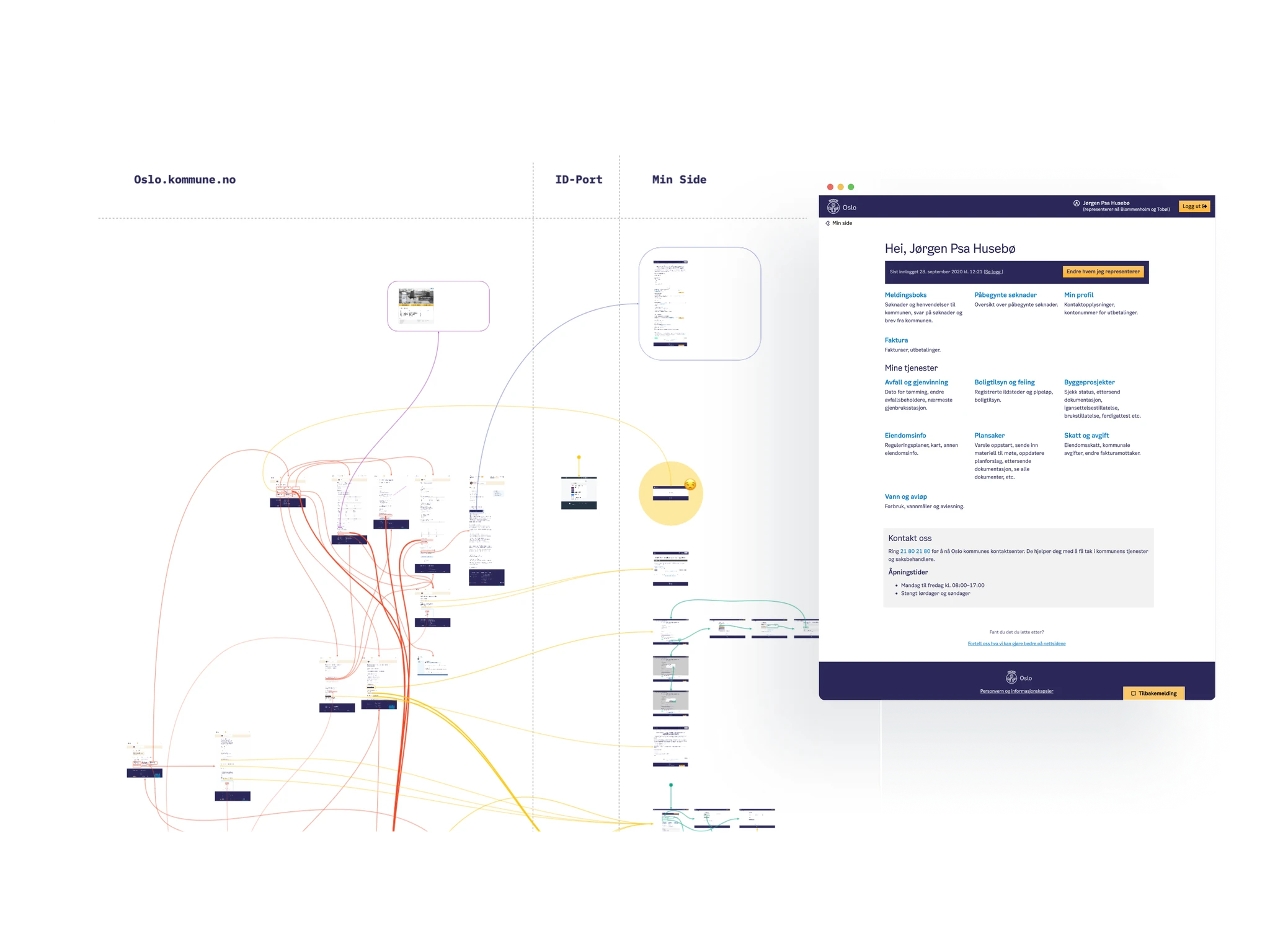
A product that was essential for establishing the efforts of digitalizing a civic organization, yet faltered as it was ahead of its time.
Role:
Senior Advisor / Service Desiger
Timeline:
Q1 2021 - Q1 2022
Employer:
Oslo Origo, Oslo Municiplaity
Employer size:
54 147 staff members
Team and Role
Oslo Origo is the agency responsible for digitalization in Oslo municipality, with a mission to integrate agile methods and digital workers into the fabric of municipal operations. As part of this effort, I worked on the "My Site" (Min side) team. Our team was responsible for the logged-in digital touch points of various municipal services, each owned by different municipal agencies.
I was the lead service designer on the team and had the opportunity to work with a team lead, two frontend developers, two backend developers, one UX designer and one content designer.
Problem
My Site was a spearhead project and part of the Program for Electronic Service from 2016. The program worked as a catalyst for the digitization of Oslo municipality.
However, after a couple of years, the My Site product stagnated. A small team was operating functionality for several services owned by other agencies in the municipality without their own technical employees. The team was a painful bottleneck, and there were no prospects or clear plans for change.
Research and Discovery
After I started as a service designer on the team we began looking at My Site from a holistic perspective. The team wanted to know why the product had not become what it set out to be in its conception - the number one digital surface between the citizens of Oslo and municipal services.
I devised a design research and discovery plan. I involved the whole team, as I wanted everyone to have a common understanding of the problems and potential solutions we were facing. The My Site product was part of a very complex environment, both organizationally and technologically, and we needed everyone's brains to decide how to move forward. I was also the newest member of the team, and some of my teammates were sitting on a lot of history and knowledge about My Site, that we could draw upon during discovery.
I set up interviews with several agencies within the municipality and all of the other tech teams in Origo, to understand their needs for a digital logged-in surface. I invited the developers to sit in on a number of them, and together with the UX designer on my team, made interview scripts and took turns leading and taking notes during the interviews.
We consistently collected and synthesized insights from interviews, along with instances from comparable logged-in public services within agencies both nationally and internationally.
Citizens use different "hats" or roles when interacting with the municipality. Citizens have different needs depending on whether they are trying to find out or do something on behalf of themselves or someone else, for example for their company or their family. Some may find it uncomfortable to mix these roles.
Reframing the Problem
The My Site product was not a bad idea. But the product was premature and was, at the time, creating unnecessary complexity and work.
But some of the most important findings we made were the lack of technological maturity in most of the other agencies in the municipality.
What I mean by this, is that they did not have their own in-house technology environment. They were unable to manage and develop their own potential logged-in service. As each agency was the keeper of their own domain knowledge, a model where our team maintained the My Site structure and logged-in entrance could have been applicable if the other agencies were able to maintain and develop their logged-in service space. However, for the time being, this was not possible.
We kept searching for a way that our team, with the knowledge we had as the connecting link between login and several digital municipal services, could help other digital teams create more holistic digital user journeys, across the municipality's service offering.
There were four things we wanted to explore:
Push for a more wholistic digital journey
Collaborate closer with the main websites (who resided in another municipal agency) in the hopes of moving and creating some logged-in functionality that fit better on the main websites.
Micro frontends
Move services and functionality out of My Site to their own logged-in surfaces.
Phasing out
Build down the My Site product.
Component library
Develop a component library to aid other teams in crafting services that present a more cohesive appearance, reducing confusion for the end user.
Outcome
Together we found a new direction for our team and product. From here we started building down My Site, which took about a year (they finished this after I had left). We also started building "Oslo Design System" based on our existing visual profile.
Through this, our team aimed to support holistic digital user journeys across the range of different services Oslo municipality provides their citizens.
"It is evident that Marthe wholeheartedly strives to enhance services for citizens. Right from the beginning, she made a remarkable impression through her proactive approach. Marthe has organized and conducted workshops, effectively guiding the team in the right direction.
Now, Marthe is better known as “the Queen of Oslo Design System.”
- the My Site Team, Oslo Origo
Reflections
Working with the digitization department in the municipality was really rewarding. Their motto was "100% society beneficial code," and "It should be a party to code for Oslo municipality 🎉." This motivated me when working on My Site and on the design system.
Working within an internal team primarily responsible for organizational functions positioned me farther along the value chain from the end user, turned me hyper-focused on the organization and all the inner workings, which I am quite good at. However, I do have even more fun when I have the opportunity to engage more closely with the end user.
